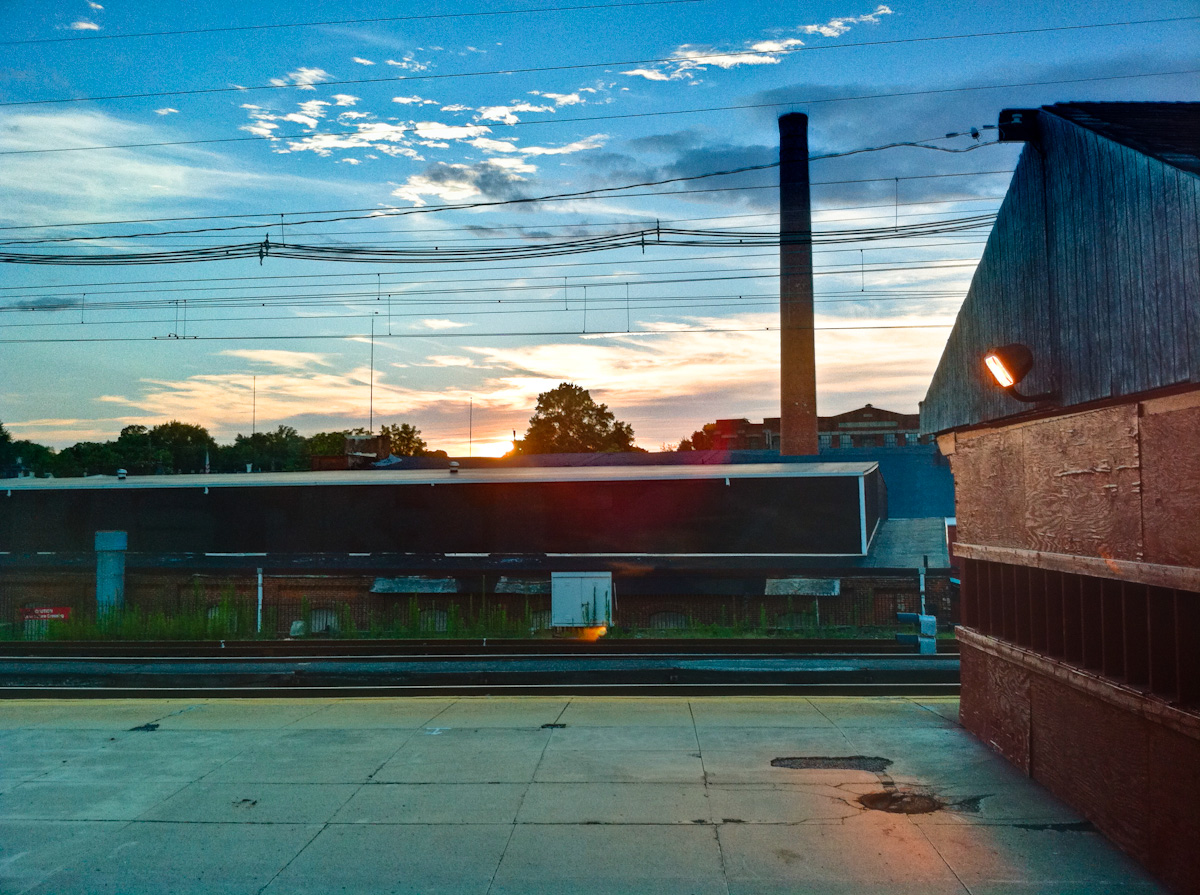Here are some photos I took throughout a day. Except where noted, all photos were imported into Lightroom 3 and resized but not retouched in any way otherwise. In other words, this is how photos come straight out of the iPhone 4's camera.
A basket on the island at home. I'm really impressed with how the iPhone 4 kept the temperature in the foreground nice and warm and kept the background cool.
I was really surprised to find that the iPhone 4's camera is actually good enough to serve as a decent art photography camera. The following photo is a photo of a large painting on the wall in a hallway in Addams Fine Arts Hall outside of our Drawing 1 class studio. The colors are more or less dead on:
A shot outside Addams Hall facing the Annenberg Public Policy Center's glass facade:
Bicycles outside of Addams Hall:
One really nifty feature in the iPhone 4's camera (this feature was also in the iPhone 3GS) is the ability to tap the screen to arbitrarily pick a point that the camera will calculate appropriate exposure bracketing, focus, and white balance from. The next three photos all show Addams Hall from the same position at the same time of day, but I picked three different points to focus on:
The iPhone 4's camera is really fast too. These shots were taken on the R5 crossing the Susquehanna river leaving 30th Street Station. The train was moving pretty fast, but the iPhone 4 still managed to get these shots without much motion blur:
Since you can pick focus points, capturing brilliant skies is really easy with the iPhone 4.
This one is just a neat shot I liked of the glass wall at the Temple R5 station:
When the train stopped at Wayne Junction, I realized something really neat about tap to focus- since tapping different points to focus also changed the exposure bracketing, the iPhone 4 is effectively a very easy to use HDR camera. Just tap to focus in several different places, and you have a string of shots at different exposures that can be merged to HDR later. Here's two shots of the station at different exposures:
...and then the two shots merged to HDR through Photomatix Pro and tone mapped:
...alternatively, Photomatix Pro has a new Exposure Fusion method of calculating a HDR photo. I actually prefer Exposure Fusion to tone mapping:
All in all, I'm really quite happy with the iPhone 4's camera. I've been looking for a good pocket camera for a while, and I think I've finally found one. The fact that the iPhone 4 can also use the phone's GPS chip to automatically geotag photos is just an even more amazing bonus.
I think I'm going to try following Sarah's example and start posting random camera photos every week. Stay tuned!
















No comments:
Post a Comment